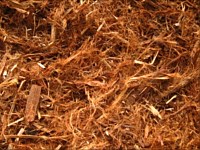Sand, Soil and Mulch
For one, when you use mulch in your landscape, you are imitating one of nature’s fundamental processes. Many plant communities naturally generate healthy layers of organic litter. Mulching provides a garden with the following benefits and more: it conserves water by shading the soil and reducing evaporation, it insulates roots by moderating soil temperatures, it helps prevent soil compaction, and it also makes plants less vulnerable to pests and diseases. Inorganic mulches, such as crushed stone and recycled rubber chips, are appropriate for rock gardens, driveways and paths. In most cases, however, organic mulches are preferable for planting beds because they eventually break down and enrich the soil. For more details and for information on how to apply mulch, contact us and we will be happy to help.
Sand is used for a number of landscaping projects, but they are especially used between pavers, to make certain types of concrete, or for a children’s outside play area. Depending on the location, sand will vary in texture and color from one location to another. A grain of sand does not hold water, is non-porous, and has large spaces between the particles which allows air to pass through more freely.
Along with air and water, soil is considered one of three major natural resources. Soil is porous, it holds water, and the fine particles that make up soil are small in size and packed together. This makes soil with very small particles much less penetrated and can even allow water to sit on top of it. There are also garden soils, which are formulated to target a specific type of plant such as flowers, vegetables, or herbs.
For more information on our landscaping products, contact us today or call us at 310-410-3108 and an expert will respond shortly. Click on the images below to view a larger display.
















